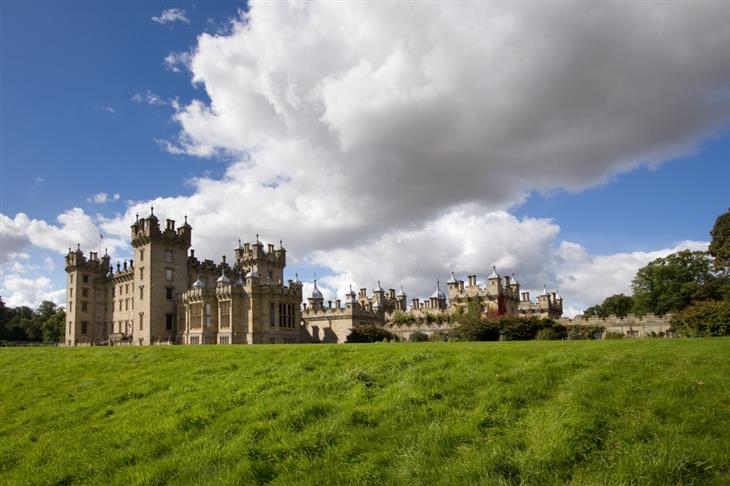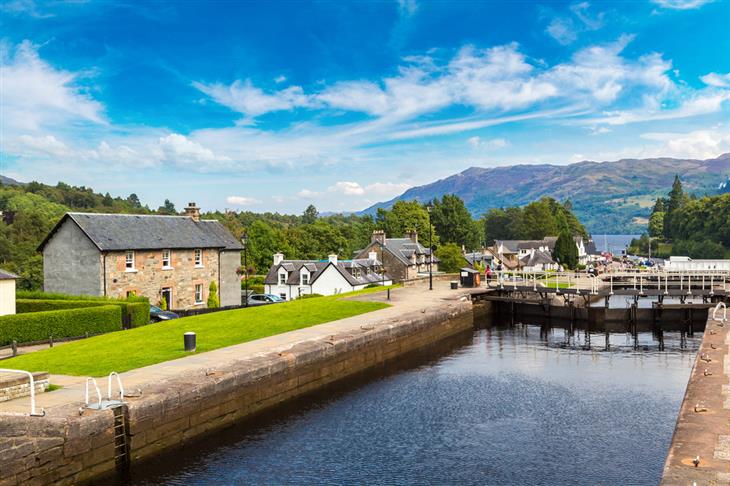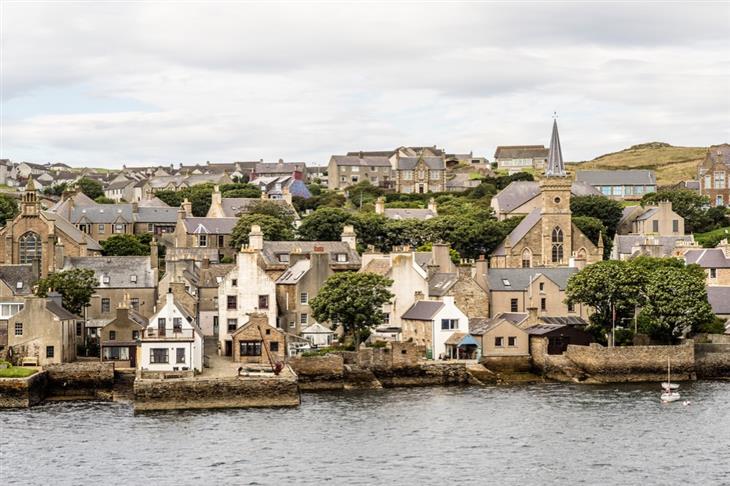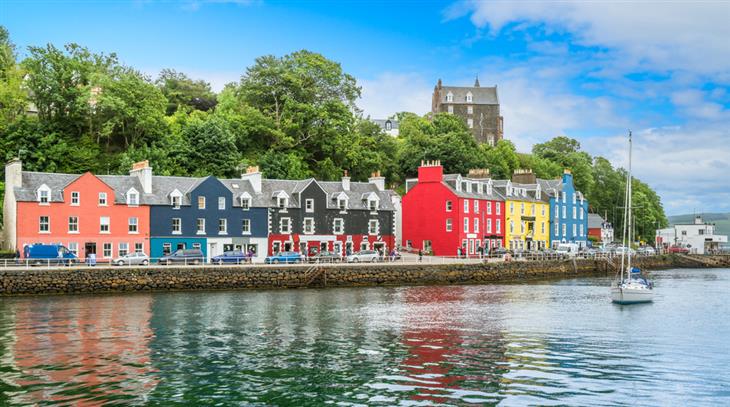Scotland has a captivating and diverse history that spans across its entire territory, encompassing the Highlands, Lowlands, Orkney, and the Hebrides. The landscape is adorned with ancient castles as reminders of past internal conflicts and external invasions. Moreover, Scotland boasts some of the highest mountains in the British Isles along with breathtaking coastlines that are unique to this region. However, it is in the small historic towns where true enchantment lies. If you are planning a trip to Scotland, here are 9 highly recommended towns to explore:
Click on the photos to see them in full size
The town and the royal house have a deep connection. One reason is the proximity of Balmoral Castle, which sometimes serves as the royal family's residence and was Queen Elizabeth II's place of death. When not in use by the royals, it is open to the public for tours. Additionally, Braemar Gathering events take place here, where Highland sports games are held with participation from the royal family since Queen Victoria's time. Visitors can explore Braemar Castle from the 17th century and ruins of another castle from the 14th century, as well as enjoy a stroll through Morrone Birkwood nature reserve.

Located just a stone's throw away from the English border, this ancient town experienced a resurgence in 1138 with the approval of a monastery construction. Even after almost a millennium, remnants of Kelso Monastery can still be observed here. However, its operations came to an end during the 16th century due to extensive damage caused by attacks led by Henry VIII, the King of England. Additionally, visitors have the opportunity to explore Floors Castle, an immense structure that was erected in 1721.
Another captivating destination is Linlithgow—a small town renowned for its historic streets and notable landmarks such as Linlithgow Palace. Construction on this palace commenced in 1424; nevertheless, it stands on grounds with even older origins. It is within these walls that one can witness exemplary late medieval architectural styles unique to Scotland. Furthermore, Linlithgow holds significance as it served as the birthplace of King James V of Scotland and Mary, Queen of Scots.

Fort Augustus is located at the southwestern tip of Loch Ness, the most renowned lake in Scotland. This loch happens to be the second largest in the country and draws tourists from all corners of the globe who are eager to catch a glimpse of the fabled Loch Ness Monster. Aside from embarking on a cruise along the majestic waters, visitors can immerse themselves in Highland culture and history at the Clansman Center or simply take a leisurely stroll through town while reveling in its picturesque natural surroundings.
If you have an appreciation for art, Kirkcudbright is an idyllic destination that caters to your interests. Known as a "town of artisans", this charming town lures numerous artists and boasts a plethora of galleries. Additionally, Kirkcudbright houses several museums such as Broughton House, housed within an 18th-century building, and Stewartry Museum which was originally situated in Town Hall but relocated due to space constraints.
This village was meticulously constructed based on a blueprint formulated during the 19th century. It is adorned with white residences featuring circular windows of varying hues, giving rise to a delightful ambiance amidst the rugged terrain. From time to time, gray seals arrive at the harbor to bask in the sun on the rocks. Additionally, this location serves as an excellent spot for bird enthusiasts due to its abundance of avian species like herons and flocks of auks during autumn
The pathway leading towards the small port is enhanced by charming pastel-colored houses. The pier in this area was designed by Thomas Telford, a Scottish engineer renowned for his work on numerous harbors and tunnels across Scotland. This landscape has been recognized as one of Scotland's top 40 most beautiful sceneries, while also being conveniently close to other noteworthy natural attractions such as the scenic 'Old Man of Stour' trail

Located in the Orkney Islands, the second-largest town is home to approximately 2,200 residents. Its origins can be traced back to the 16th century, when it gained recognition as a destination with an inn that provided accommodation for travelers. Throughout history, this town played a pivotal role in the conflict between France and England due to its strategic position that allowed English ships to avoid attacks from their French counterparts by bypassing the English Channel. To enhance visitors' understanding of its rich history, the town boasts a captivating historical museum. Additionally, just a short 20-minute drive away lies Skara Brae - an archaeological site of immense significance that predates both Stonehenge and even Egypt's pyramids.

This vibrant town captivates with its charming array of colorful shops and restaurants set against a backdrop of lush green trees and either dark or blue skies depending on weather conditions. Visitors will find themselves spoiled for choice with numerous activities available here.
The Tobermory Museum provides an enriching experience through its exhibits showcasing various aspects of local culture and heritage. For those fascinated by marine life, the aquarium is definitely worth exploring. And let's not forget about Tobermory Whiskey Distillery, where whiskey enthusiasts can indulge in tasting sessions while learning about the intricate process behind crafting this renowned spirit.
